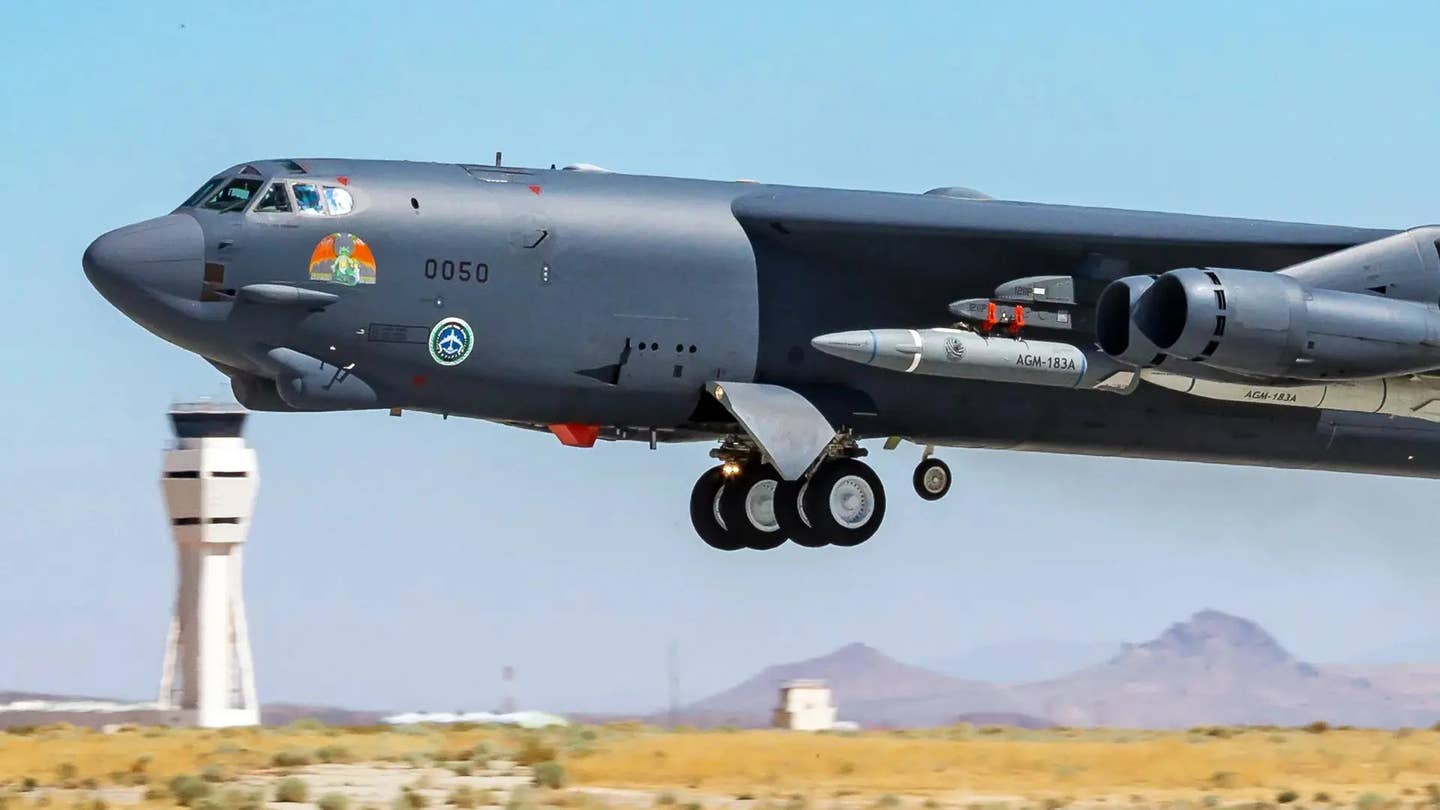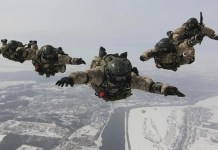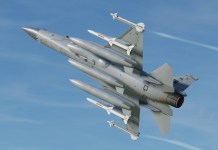On December 12, the US Air Force and Lockheed Martin announced that they had completed the first successful end-to-end test of a complete prototype of the AGM-183A Air-launched Rapid Response Weapon, or ARRW.
The new milestone comes as the US strives to catch up to China and Russia in what has turned into a dangerous arms race between the most powerful militaries in the world.
The recent announcement puts Washington on track to become the third country to deploy hypersonic missiles, expected by the end of next year.
According to a press release from the Air Force, the test took place on December 9 and involved a B-52H bomber from the 96th Test Wing releasing the prototype ARRW off the coast of Southern California. This is the first time an AGM-183A all-up round (AUR) has been launched in live testing.
The missile’s unpowered hypersonic boost-glide vehicle payload, which had a live warhead and traveled at speeds greater than Mach 5, was successfully released, according to the service, before striking a predetermined target area.
This represents a significant milestone for a program whose first live-fire flight testing last year was hampered by several issues, raising concerns about its viability. The Air Force had already performed a series of live-fire ARRW AGM-183A tests. However, these were primarily focused on showing the weapon’s rocket booster’s capability.

In May, the service successfully carried out the first booster test. That came after two unsuccessful trials and a subsequent mislaunch, which the service regarded as a partially successful outcome based on the still-valuable information gathered.
The service said that the ARRW completed its flight path after separating from the aircraft, accelerated to hypersonic speeds exceeding five times the speed of sound, and exploded in the terminal area. The weapon achieved all the objectives.
“The ARRW team successfully designed and tested an air-launched hypersonic missile in five years. I am immensely proud of the tenacity and dedication this team has shown to provide a vital capability to our warfighter,” said Brig. Gen. Jason Bartolomei, Armament Directorate Program Executive Officer.
On the launch day, plane spotters observed a B-52H in flight carrying what seemed to be an ARRW headed toward the Pacific. At the time of the test, High Altitude Observatory (HALO) Gulfstream business jets and a NASA WB-57F high-altitude research plane were also tracked online, flying toward the test.
A Crucial Weapon Against China And Russia?
The AGM-183 has long been hailed as the Air Force’s first-ever operational air-launched hypersonic missile, but its fate is very much in doubt. Top Air Force officials, like Secretary of the Air Force, Frank Kendall, have remained circumspect when addressing the service’s plans for the weapon despite the advancements made this year.
In its proposed fiscal year 2023 budget, the Air Force stated that it had abandoned intentions to start formal purchases of AGM-183As and would instead use “procurement” funds for additional research and development.
In July, Andrew Hunter, Assistant Secretary of the Air Force for Acquisition, Technology, and Logistics told reporters, “You obviously wouldn’t buy something that doesn’t work. But even if it does work, it’s got to be the right contribution to the overall weapons mix.”
As previously reported by The EurAsian Times, the Air Force is also working to build an air-breathing hypersonic cruise missile that might, in some circumstances, replace ARRW as a future long-range, high-speed strike weapon.

That being said, the Air Force has been moving in a direction that would support a potential early operational fielding of the ARRW by next year. The USAF recently revealed that it had validated the standard procedures for loading AGM-183As onto B-52H aircraft.
These efforts are crucial given that China and Russia have significantly advanced in developing hypersonic weapons.
Last year, China successfully carried out the test of a hypersonic glide missile. On the other hand, it is believed that Russia launched hypersonic Kinzhal (Dagger) missiles three times in Ukraine during Moscow’s “special military operation.”
- Contact the author at ashishmichel(at)gmail.com
- Follow EurAsian Times on Google News




